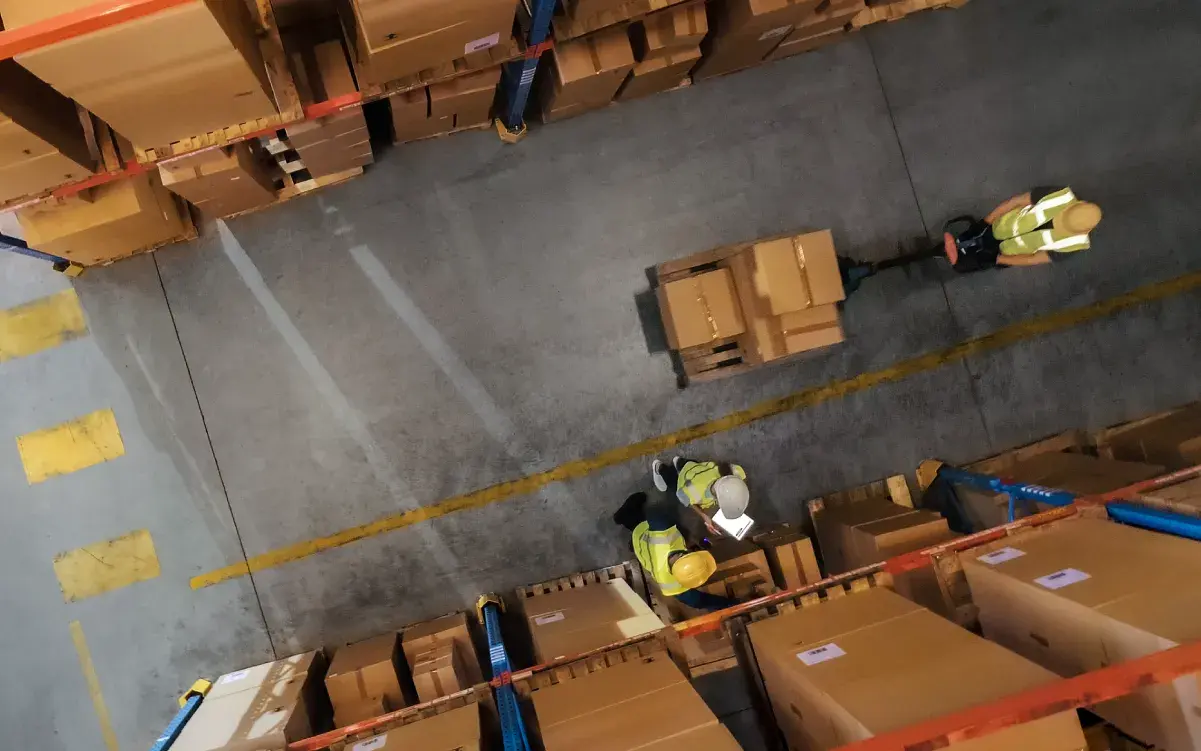3PL Reporting: What Clients Need to Succeed (Updated)

Customers worry about loss of control and transparency when it comes to using a 3PL. But the right warehouse management tools can give your clients the transparency they need—and give you a competitive advantage.
As the complexity of 3PL logistics operations grows, so does the importance of comprehensive and efficient reporting. Without the insights generated by these reports, problems can lurk undetected, growing in size and severity while opportunities to cut costs (or become more efficient) go unrecognized.
Likewise, clients need visibility to understand real-time fulfillment and track their KPIs. While there are an unlimited number of approaches to 3PL reporting, we’ve found that focusing on the client’s needs leads to the best outcomes for both parties.
What Clients Need from 3PL Reporting Functions
So, how do these concepts impact businesses in the real world? First, and arguably most importantly, they undermine the rationale for the passive creation and consumption of reports. Regular reports aren’t fundamentally bad, and you should strive to monitor your KPIs regularly, but they can lead to an illusion of transparency. Ultimately, clients have to read the reports to derive any value from them; if the reports aren’t relevant, they won’t get read. Likewise, problems emerge in real-time, but the relevant report might not be generated or read until the evening or the next day, leading to significant losses. In these situations, the client and the 3PL may have felt there was transparency, but without access to meaningful data at the right time, both businesses will suffer.
Customer portals can help resolve the issue with transparency by allowing clients to access real-time and on-demand data based on their role, ensuring relevance. For example, a client’s buyer may only have access to information about a particular SKU’s sales and velocity. Management, of course, would have a more holistic view of the entire product line.
But access alone doesn’t solve the problem. Customer portals provide responsiveness and help ensure critical information is seen and acted upon with alerts. Alerting can help clients respond more quickly to low inventory or identify and respond to fulfillment operations that take too long to complete. And while some problems are universal, every industry is different, and even within one industry, every company is different. A 3PL reporting system with a cookie-cutter approach will ultimately leave clients without the insights and opportunities they’re looking for.
The best 3PL reporting systems have completely customizable customer portals, allowing for maximum flexibility. After all, a 3PL will never know clients’ businesses as well as they do. With a customizable system, clients can choose which data they need to track, based on their objectives and KPIs. This flexibility enables clients to get the reporting they need while having the option to change reporting over time to suit their evolving business needs.
To summarize this section, transparency with your fulfillment partner is about more than just getting reports. Clients need transparent, flexible, and responsive access to data to ensure they receive the insights they need to meet their KPIs. 3PLs need the right WMS to support these customer needs as effectively as possible. Getting this right pays dividends for the clients, and helps the 3PL, too. ShipCalm, a 3PL company, experienced a 44% improvement in fulfillment SLA and a 75% improvement in labor efficiency after adopting Infoplus—check out our case study to learn more.
Popular Reports for Better Decision-Making
The baseline outlined above provides the framework for effective 3PL reporting but doesn’t necessarily explain what clients evaluate with reports. While all businesses are different, some metrics are commonly evaluated and lead to frequent requests from clients.
Velocity
Knowing how quickly items are sold helps in making numerous different decisions. It informs buyers how frequently they need to reorder products. It also can predict seasonal ramp-ups and show when an item is no longer in demand and can be discontinued.
When a 3PL is performing kitting of products, tracking the velocity of the individual components of the kit is essential if those pieces are also sold separately. For example, one item in a kit might also be popular. If kitting frequently pauses because the item keeps selling out, ordering might need to be increased.
Order Accuracy and Returns
Incorrect or incomplete orders result in unhappy customers and returns. Data on inaccurate orders is valuable to clients because it helps them identify and resolve quality control issues and picking errors. Of course, every business will have some returns, and some industries—such as apparel—have more than most. Understanding the frequency and reasons for returns can root out suppliers whose quality has declined, shippers who damage goods, or even a website that is confusing or has inaccurate item descriptions. Reporting may also show problems with the fulfillment processes in the 3PL’s warehouse. Once discovered, these issues need to be addressed by the 3PL, or they may risk losing that client.
Speed of Delivery
Lagging delivery times can indicate it is time to assess and possibly change the carrier being used to ship products. Late arrivals of orders result in unhappy customers and can increase return rates, too. Discovering this through reporting, rather than through customer complaints and returns, allows the company to proactively communicate and, if needed, make it right to retain the customer.
Shrinkage
Inventory shrinkage through breakage, spoilage, or theft is an important metric for clients to watch. Companies may discover a problem with how items are being stored, leading to excess shrinkage. Likewise, violating FIFO or LIFO rules may lead to perishable products expiring. Once found, these issues can be fixed. If a 3PL’s operations are to blame for high shrinkage metrics, it could ultimately cost them a contract, but with high-quality reporting, these issues can be identified and resolved sooner.
Cycle Time
Cycle time is the time inventory spends in the warehouse, from when it is received until it is shipped to the customer. Sellers will want to watch cycle times to optimize carrying costs in the 3PL’s warehouse and ensure profitability.
Cost Per Order
Looking at the cost of every order based on material costs, shipping, and the price of the 3PL’s services can give companies powerful insights. It will show which products are the best money-makers, where in the supply chain to look for savings, how to tighten up processes in the warehouse, and whether their pricing needs adjustments.
Give Them What They Want, When They Want It
When a 3PL looks for WMS and inventory management software, their clients’ needs must be top of mind. This mandate means that clients should have some say in what data they can use and how granular their reports are. Only current, real-time data will do—not a report for last month, last week, or even yesterday.
Through clear, timely reporting, they can have the data they need to make decisions at their fingertips. But only some WMS for 3PL systems are up to the task. Infoplus provides 3PLs with a powerful system that goes beyond the basics, from data visualization for your clients to 3PL billing solutions for you. Ready to get started? Book a demo today to learn more about how you can better support your clients with Infoplus.
.png?width=225&height=60&name=Logo%20(7).png)





